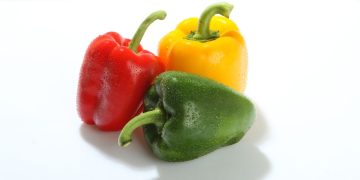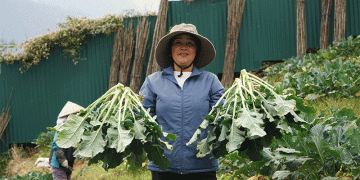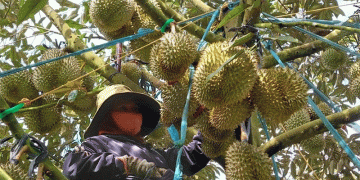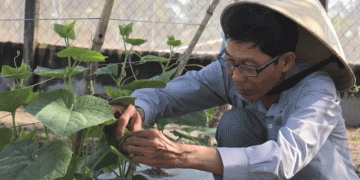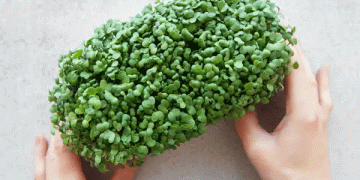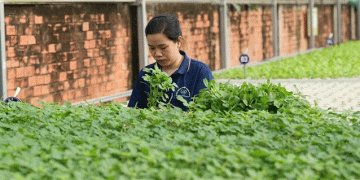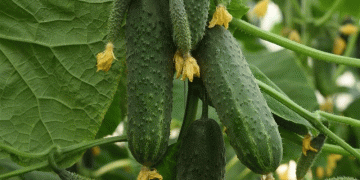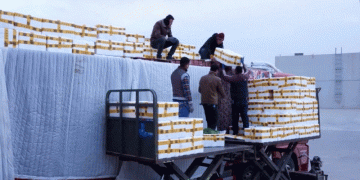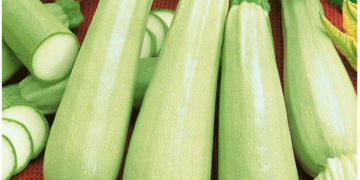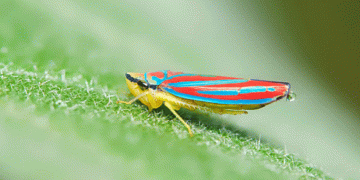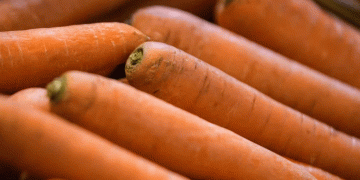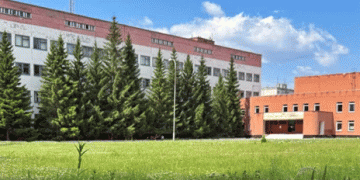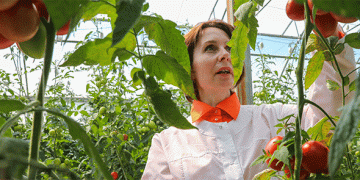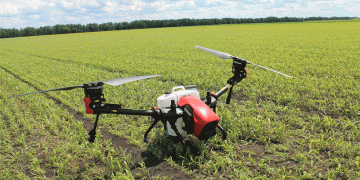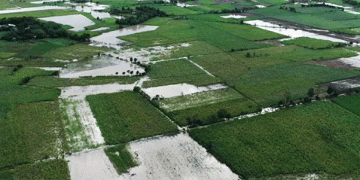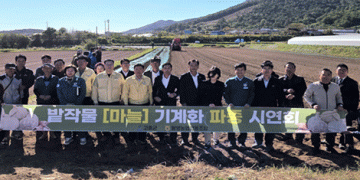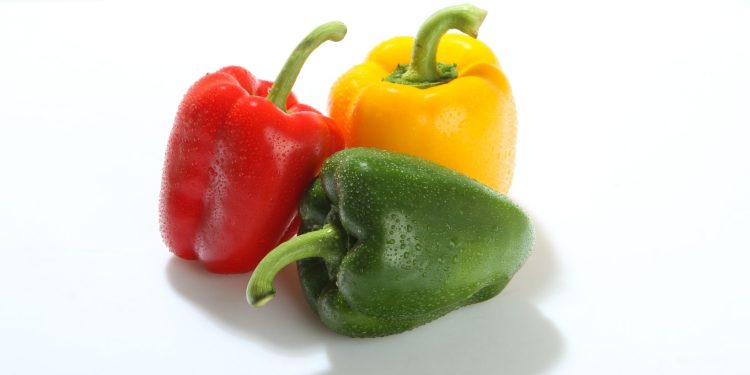Capsicum Farming Techniques, Cultivation Practices
The following information is about Colored Capsicum Farming Techniques, Tips, Ideas and Cultivation Practices.

Introduction :
Colored capsicum which also knows as “sweet pepper” or “bell pepper” is one of the important high-value vegetable crops cultivated in greenhouses and to some extent under shade net house in milder climatic regions like Bangalore, Pune, etc. It is rich in vitamin-A, C and minerals. Capsicum cultivation is very popular in Peri-Urban production systems because of easy access to urban markets in India like Bangalore, Hyderabad, Pune, etc. It is also gaining importance in the Goa state due to the ready market available throughout the year. It is sold anything between Rs.80- ISO/kg depending upon the color, quality and season, etc. Capsicum yields in open field cultivation range between 20-40t/ha, whereas in a greenhouse the yield range is from 100-120 tonnes/ha.https://imasdk.googleapis.com/js/core/bridge3.510.1_ru.html#goog_317413672https://imasdk.googleapis.com/js/core/bridge3.510.1_ru.html#goog_317413674https://imasdk.googleapis.com/js/core/bridge3.510.1_ru.html#goog_317413676https://imasdk.googleapis.com/js/core/bridge3.510.1_ru.html#goog_317413678https://imasdk.googleapis.com/js/core/bridge3.510.1_ru.html#goog_317413680

Read: Advantages of Crop Rotation.
Suitable Climate for Capsicum:
Capsicum is basically a cool season crop and day temperatures less than 30°C is favorable for growth and yield. But due to the introduction of a good number of hybrids with wider adaptability, it can be successfully cultivated in a warm climatic place like Goa state. But very high temperature results in rapid plant growth and affects fruit set. Lower night temperature favors flowering and fruit set. Hence, planting during September-October in Goa will coincide with milder climate during flowering and fruiting i.e. November-February. Shading is required during summer to avoid temperature build up in greenhouses.
Selection of planting material for Capsicum production
- The planting material should be healthy, resistant to diseases & pests.
- Age of the seedling should be 35 to 40 days old.
- Height of the seedling should be 16 – 20 cm.
- The plant should possess good rooting system.
- The seedling should have at least 4 – 6 leaves on the stem at the time of plantation.
Other characteristics like fruit shape, fruit color, production, fruit quality, and vigor should also be considered while selecting plant material of a good variety of capsicum.
Capsicum varieties cultivated in India:
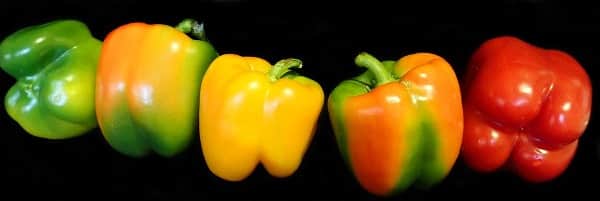
| S.No. | Variety | Colour |
| 1 | Bomby | Red |
| 2 | Orobelle | Yellow |
| 3 | Indra | Green |
Growing beds and Soil sterilization:
The soil inside the polyhouse is loosened to a fine tilth and then beds are formed at 75 cm width with 45 cm height and leaving 45 cm working space between two beds. Before bed formation, well decomposed organic manure or Vermicompost along with sand, sawdust is added to soil @ 10kg per m2. The beds are drenched with 4% formaldehyde (4litres/m2 of the bed) and covered with polythene sheet for 3-5 days. Afterward, the polythene is removed; the beds are raked repeatedly every day to remove the trapped formaldehyde fumes completely prior to planting.
Planting, pruning, and training of Capsicum plants:

Read: Veneer Grafting Procedure.
The ready seedlings are planted at a spacing of 60 cm between rows as paired row system by keeping 30 cm between plants on raised beds. Before planting, the seedlings are sprayed with Imidacloprid (0.3mVl) to prevent any sucking pest infestation in the polyhouse.
The bed should be irrigated with water and kept wet at the time of plantation. Capsicum seedling should be sown in two rows on the raised beds. Plantation of capsicum can also be done on a raised bed with plastic mulch in order to save water and checked the growths of weeds. Watering the bed is done daily with a rose can till the seedlings get established well. Afterward, drip irrigation is started daily to supply 2-3 liters of water per square meter per day depending on the local weather condition. Capsicum plants are trained to retain 2-4 stems per plant. Pruning is done at weekly interval starting from 15-20 days after transplanting.
At every node, the tip splits into two giving rise to one strong branch and one weak branch which is removed retaining the strong branch. This operation needs to be done once in a week. From the 4th month onwards the pruning operation will be done once in 10 days.
Planting method of Capsicum:
Two rows of Capsicum seedlings are planted in a zigzag method on the bed.
Planting distance of Capsicum:

Read: How to Grow Vegetables in the Balcony.
Plant to Plant distance: 40 cm & Row to Row distance: 50 cm
| S. No. | Area of polyhouse (m2) | Planting density | Total plants required |
| 1 | 560 | 2.5- 3.5 plants/ m2 | 1400- 1960 |
| 2 | 1008 | 2.5-3.5 plants/ m2 | 2520- 3528 |
Fertigation and Manure:
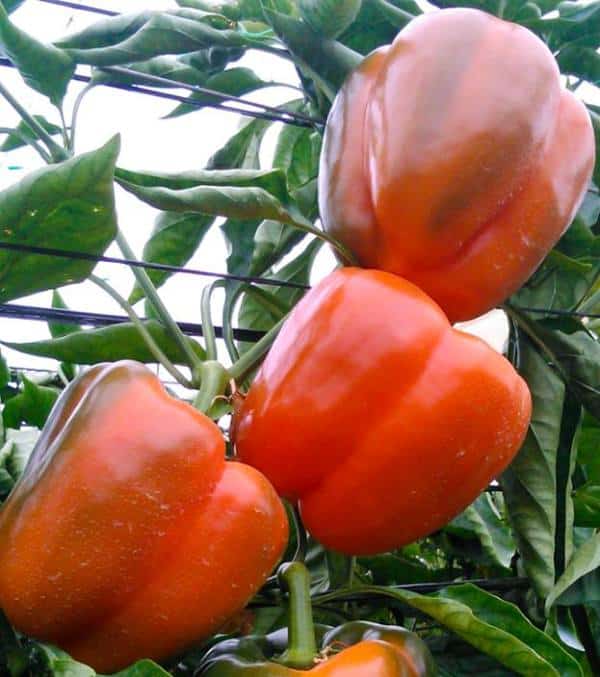
The total dose of 150 kg each of N: P205:~O per hectare using water-soluble fertilizers is given through fertigation for entire crop growth period of 6-8 months. Water soluble fertilizer supplying 19% each NPK is used at the rate of 2.5-4g/m2 for every fertigation by giving twice a week starting from the third week after planting.
Disease and pest control of Capsicum:
Thrips and mites: It is a sucking pest affects most of the greenhouse crops. Capsicum is self-pollinating but there is a high degree of cross-pollination because of honey bees, thrips and other insects who transfer pollen from blossom to blossom. Pollination is not improved by using “ electric bees” or by spraying plant hormones but pollination is clearly better when honey bees or bumble bees fly in the greenhouse. Bees increase the number of seeds in capsicum fruits.

Fruit thinning in Capsicum farming:
When there are too many fruits on the plant, it is necessary to remove some fruits, to promote the development of remaining fruits. This operation is called as fruit thinning. Fruit thinning is done when the fruit is of pea size. This practice is normally followed to increase the size of fruit thus by increasing the quality of production.
Read: How to Grow Dhaniya on the Terrace.
Harvesting and yield of Capsicum:
Harvesting of capsicum fruits starts from 60 days of planting in case of green color capsicum, 80-90 days in case of yellow and red fruited hybrids. Harvesting continues up to 170-180 days at 10 days interval in green and up to 200-250 days in red and yellow. Fruits that are mature green, yellow when it is 75% yellow and red when it is 100% red are harvested and kept in a cool place.
Harvesting of capsicum is done at the green, breaker and colored (red/ yellow, etc.) stage. It depends upon the purpose for which it is grown and distance for the ultimate market. In India, fruits are harvested at breaker stage for long distant markets. For the local market, it is better to harvest colored stage. Breaker stage is the one when 10% of the fruit surface is colored and when more than 90% of the fruit surface is colored it is considered as a colored stage. A yield of 80-100t/ha (8-10 kg/m2 ) can be expected from a single crop. Average individual fruit varies from 150- 200 grams.

Post Harvesting and Storage of Capsicum:
Capsicum Fruits are graded to size and color to ensure a uniform attractive pack. Shrink wrapping each fruit and storing at 7-8°C will enhance storability up to 45-60 days. Capsicum is packed in cartons and should hold about 10 kg or 12 kg of capsicum. Most farmers use apple boxes (used ones) for packaging capsicum for the local market.
